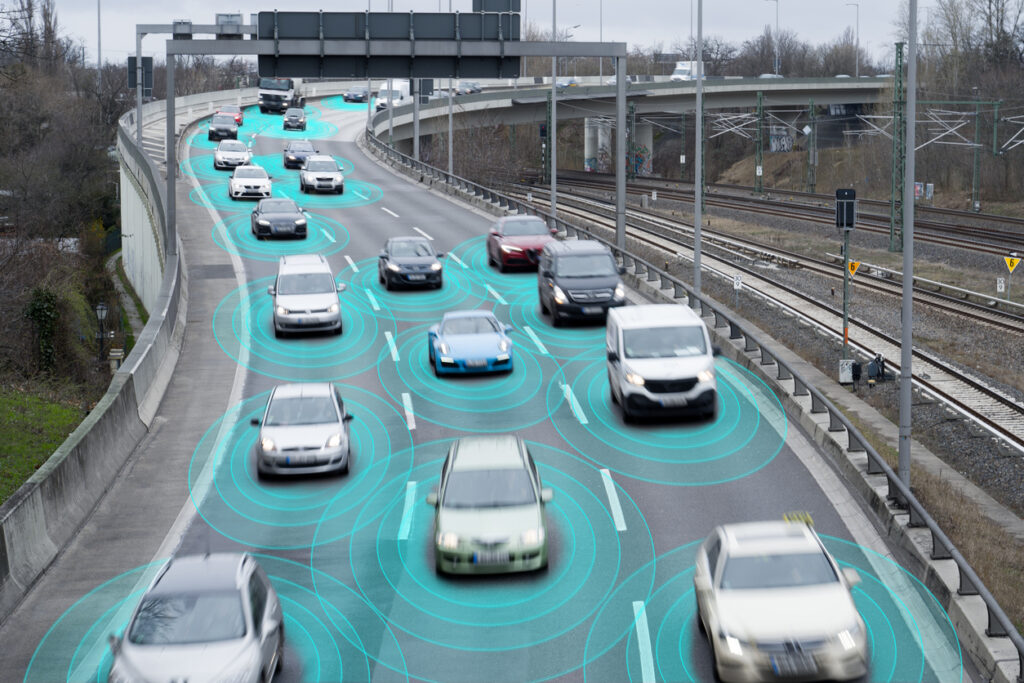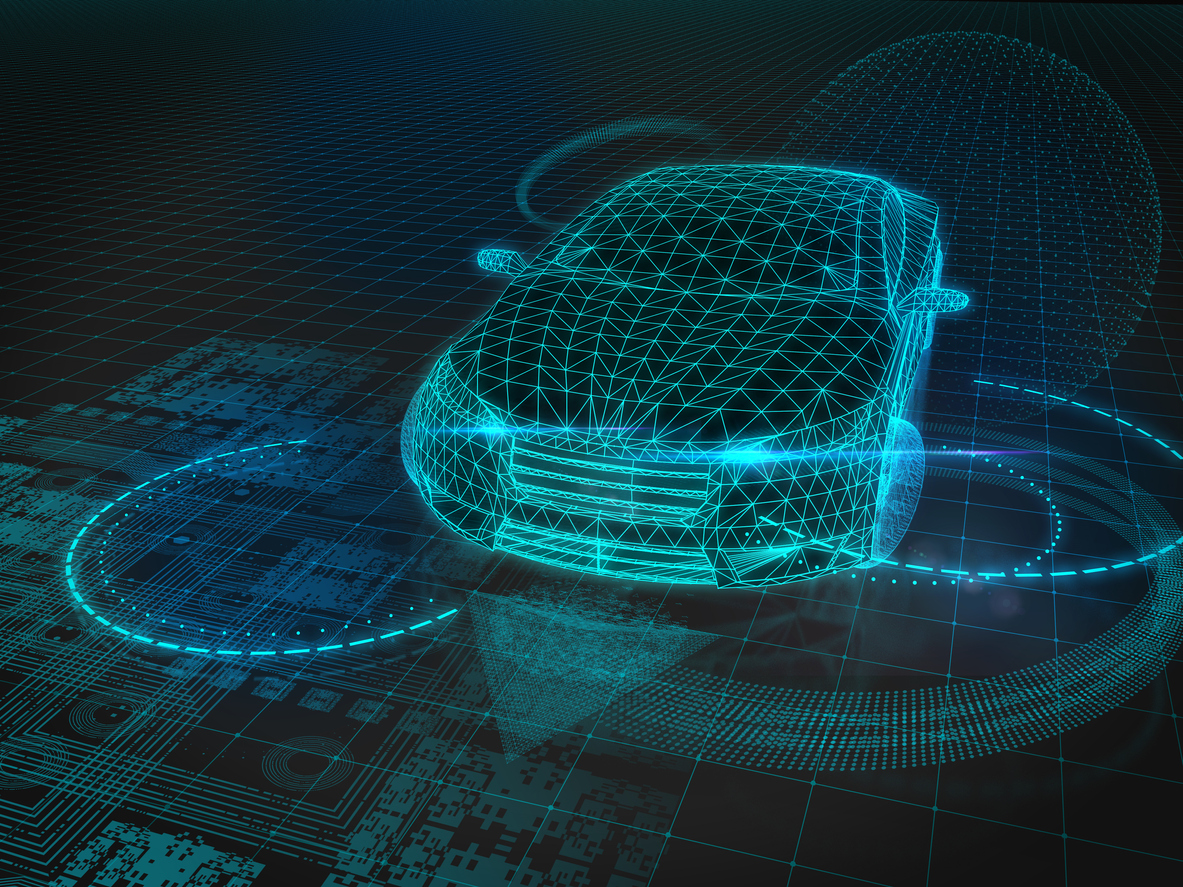You may have seen autonomous vehicles in futuristic films or video games, but in a decade or so, they will be a common sight on our roads.
An article by McKinsey & Company states that by 2035, autonomous driving could generate 300-400 billion US dollars in revenue. As autonomous vehicles continue to be developed and become more widely adopted, the knock-on effect to consumer electronics could be huge. Read on to find out which types of electronics are likely to see a surge in demand as autonomous vehicles see unprecedented growth, but first let’s take a look at what driving automation looks like.
The levels of driving automation

US-based standards developing agency SAE International has defined the six levels of autonomy as the following:
- Level 0 – no driving automation. The vehicle has no automated driving features and driving is 100% manual.
- Level 1 – driver assistance. Vehicles equipped with a system which supplies constant assistance with acceleration, braking and speeding. Adaptive cruise control is an example of this.
- Level 2 – partial driving automation. A large portion of the autonomous vehicles on the market today are Level 2. They’re equipped with advanced driver-assistance systems (ADAS). The ADAS provides continuous support with steering, accelerating and braking, but the driver is 100% attentive and involved.
- Level 3 – conditional driving automation. This is where the vehicle takes control of all the driving functions, but the driver must be in the driver’s seat and ready to take control when required. This is a level that we’re not currently at.
- Level 4 – high driving automation. The difference between Level 3 and Level 4 is that the system can intervene if a malfunction occurs instead of the driver having to take over. However the driver still has the option to take over.
- Level 5 – full driving automation. This is what we picture when we imagine a self-driving vehicle. There is full automation and the car is not equipped with pedals or a steering wheel.

At the moment we are floating around the Level 2/Level 3 area, so a lot of development is needed to get to Level 5.
How will autonomous vehicles affect consumer electronics?
Fully automated cars may seem like a pipe dream for the stage we are at right now, but as automotive manufacturers and engineers start to build in more automated driving features, there will be an increase in demand for consumer electronics. A lot of automated processes contain consumer electronics, but take a look below at the types which will see a surge in demand as autonomous vehicles become more sophisticated.
Sensor technology
Autonomous vehicles rely heavily on sensors for a range of functions, especially to safely navigate. The most common sensor technologies used in autonomous vehicles are:
LiDAR (light detection and ranging) is what self-driving cars use to scan their environment and detect obstacles in their path. A lidar sensor works by emitting thousands of beams of infrared laser light and then measuring how long it takes for the beams to reflect from environmental features onto its photodetectors. Lidar systems can calculate how far an object is from the car by using the speed of light. Discover industrial lidar sensors from SICK, perfect for area monitoring.
Radar (radio detection and ranging) uses radio waves to measure a variety of information relating to the surrounding environment. Radio waves reflected from any surrounding objects can be used to calculate the object’s angles, ranges and velocities. Radar is particularly useful over long distances and in adverse weather conditions, making it ideal for autonomous vehicles.
Sonar (sound navigation and ranging) is used by autonomous vehicles to detect the proximity of objects and obstacles, and to navigate. Like lidar and radar sensors, active sonar sensors send out sound waves and then listen for echoes returned by physical surfaces. Sonar sensors don’t require light to work, but can be hindered by the fact that the speed of sound is not as fast as speed of light.
Cameras are used by autonomous vehicles to almost mimic the way humans see the world whilst driving, capturing high-resolution images from different angles. With image data, self-driving cameras can identify traffic signs, recognise objects, control vehicle motion and model 3D scenes. Explore our range of dual camera dashcams from Transcend with high-sensitivity image sensors and dual camera recording. Find out more here.
Connectivity and communication
It’s likely that in the future, cars will become just another device to add to your collection with your phone, laptop or smartwatch. As your IoT devices are connected with each other today, be prepared for autonomous vehicles to be embedded into your IoT network, with things such as smart home devices or wearables. It’s expected that autonomous vehicles will cause an increase in demand for IoT devices, as well as high-speed internet connections and faster mobile networks to enable a seamless integration with the vehicle.
As autonomous vehicles become more connected, collecting and sharing more data with other devices, it will mean that storage and processing will be more important. Consumer electronics companies can benefit from offering improved cloud services to store such data, including personalised experiences and predictive maintenance. In addition to this, self-driving cars rely heavily on navigation and mapping systems, meaning that consumer electronics can use this opportunity to create optimised mapping systems which can integrate into the autonomous vehicle, giving real-time traffic updates and optimised routing.
Safety and security

One of the biggest concerns for autonomous vehicles is how safe and secure they are. The obvious safety concern is whether they can drive themselves without causing accidents. As we’ve discussed in this article, sensors and ADAS technologies are essential to help prevent crashes and ensure passenger safety. Consumer electronics companies can develop and improve elements of ADAS systems to improve safety and security on the roads. These technologies include sensors, cameras and processors and deal with aspects such as emergency braking, collision warning and lane departure warning.
But it’s not just road safety that is a challenge to overcome for autonomous vehicles. With autonomous vehicles becoming more connected, there is a risk of hacking, so cybersecurity is an important consideration. Biometric Authentication Systems (BAS) like facial recognition and fingerprint scanners can add a layer of security to autonomous vehicles and help prevent hacking. As autonomous vehicles will generate and store a lot of data too, it’s important for companies to install secure data storage options that are robustly encrypted.
Another way of ensuring autonomous vehicles are as secure as possible is by authorising OTA (over-the-air) updates to software systems. This is important as it ensures any software updates are done automatically, and without the need for manual intervention.
Conclusion
As vehicles become closer to level 5 on the autonomy chart, it’s clear to see that they will have a huge impact on consumer electronics. Consumer electronics are key to the success of autonomous vehicles, integral in many of the features of self-driving cars. Consumer electronics companies can play a crucial role in the development of autonomous vehicles and the technology that goes with them, by ensuring they are secure, connected and efficient. Over the next decade, we can expect to see the autonomous vehicle market grow, and subsequently that’s great news for consumer electronics companies.











